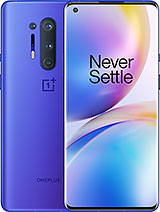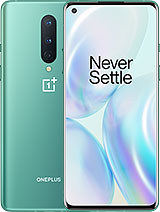OnePlus 8 Pro vs OnePlus 7T Pro vs OnePlus 7 Pro: In-Depth Comparison! By #GNTECH
All right so the 1+8 Pro is a big deal for the company, but we wanted to see how it compares with its previous generation 1, plus 7, Pro and 70 Pro. We've got all three phones here and right off the bat. There is a big difference in color scheme. The flagship color for one plus a series last year was blue, nebula, blue on the 7 Pro and haze blue on the 70 Pro, but with the 8 Pro, we've got this new Glacial green finish, which definitely picks up less fingerprints and looks arguably a bit better now in terms of dimensions, we're looking at fairly similar sizes. If anything, the 8 Pro is slightly larger in the hand, but it feels more comfortable, which I think is due to the better weight distribution. The 8 Pro comes in at 199 grams, while both the 7 Pro and the 70 pro wait 206 grams each and that subtle difference is definitely noticeable.
Looking around the smartphones edges, there is also a big difference. The 8 proves design feels a lot more refined and premium, and I credit that to its edges. You also find that antenna lines are a lot more subtle on the 8 Pro, which is welcome and there's a few differences in the way. Ports and features have been laid out for one. The secondary microphone moves places, but so does the primary one and there's no pop-up housing for the selfie camera on the 8 Pro like there is on the 7, Pro Series, and we'll get into that a bit later on.
There's also changes to the way the speaker grille is designed, but on the overall the essence is the same: complete with the volume and power buttons. Oh, and a big change. Now the 8 Pro is officially ip68 water and dust resistant, something the 7 Pro Series was not before flipping the phones over and getting to the displays, though, let's take a look at the cameras on the 7 Pro and the 70 Pro. You had a triple camera setup with a 48 megapixel primary 16 megapixel ultra-wide and an 8 megapixel telephoto lens with 3x optical zoom. There's a big change with the camera on the 8 Pro, though, and not only is it a bigger camera bump, but now it sports more features, there's the same resolution, 48 megapixel primary sensor, but with a larger sensor size and a 48 megapixel ultra-wide lens.
You also get an 8 megapixel telephoto lens with 3x optical zoom once again, but on the 8 pro you can also zoom in up to 30 times using digital zoom. Finally, there is a fourth 5 megapixel color sensor on the eight probe ? we've taken a few samples with these phones and the color sensor definitely seems to be making a difference. Images also look slightly brighter on the pro and a bit more detail is preserved. Overall, although there is still noise at 10x, zoom and higher, with the ultra-wide sensor, though, there's a noticeable difference in quality and exposure, and the same can be said about pictures in the dark in extremely dim conditions. The 8 Pro does a far better job than the 7 Pro Series, although the difference is less visible when more light is present.
So that sums up the majority of the design of the phone and its primary cameras now flipping the phones over you get their displays on the 7 Pro Series. It's a six point. Six seven inch HD plus panel with a 90 Hertz refresh rate I, must mention the 7 Pro Series also comes with a pre applied screen protector and Corning Gorilla Glass 5 protection on the front and back of the phone. On the contrary, the 8 pro rocks a larger six point. Seven eight inch HD plus panel with a 120 Hertz, refresh rate with no pre applied screen protector and the same Corning Gorilla Glass 5 protection found on the 7 pro series also just to add all three of these phones have in screen fingerprint scanners, and they seem to work about the same speed.
Now. The obvious difference in screen is how smooth they are. And, yes, the 120 Hertz refresh rate does make a huge difference, I'm going to scroll through a few pages, and you can judge for yourself. Although conveying these things on camera is a bit harder. Something that's also different is, while these are panels that are HD, r10 certified and fluid AMOLED panels.
At the end of the day, the one on the pro supports up to 1 billion colors, as opposed to 16 million on the 7 Pro Series, and while the 7 Pro Series, does have a video enhancer mode of its own, the 8 pro renames, this 2 vibrant color effect Pro and also adds a motion, graphic smoothing option from multimedia which works on certain applications in full-screen mode. At times, you do see some blurring in videos, and this pushes the overall video by a few milliseconds behind when using this option, but on the overall things, look much smoother. Also, the 8 pro stereo speakers are much better when it comes to music listening. So that's a noticeable change to. But yes, one thing the 8 pro is lacking is perhaps that all screen experience on the 7 Pro Series.
You get a full display with no punch hole or not whatsoever, which some may prefer, but I don't mind the whole punch either. In fact, in either configuration you still get the 16 megapixel camera on the front and once again here are a few samples, I've taken so far, there's a bit more exposure and detail to the 8 pros images, which is surprising considering it doesn't have a dedicated pop-up unit, although something we would have liked to see here would be an upgrade to 4k resolution, video recording, at least at 30fps, on the front camera of the 8 pro now jumping into software and processing. It's no surprise to see each phone feel quite quick because of one plus's oxygen, OS 10 on top of Android 10, and it's just well optimized with each phone you get a 7, nanometer processor onboard, and it's a step-up from one another on the 7 Pro there's the Qualcomm Snapdragon 855, whereas the 70 pro has the 855 plus on the 8 pro it's the latest Snapdragon 865 processor, without its support for 5g connectivity and here's an in-depth look at each phone's processing power onboard now. While we really can't do full-fledged speed tests, here's the difference in an tutu scores, we've got so far and further we've kept some applications running in the background. So let's take a look at RAM management too, just while we're at it, we think the 8 Pro will deliver the maximum power between these 3 phones, and we'll get you the better performance overall, just because it has 12 gigabytes of RAM, but also because of its latest end processor.
Something also to note is that all of these phones come with UFS 3.0 storage, which is plenty fast, but not the latest. That is UFS 3.1 and there's no room to expand this via micros and I. Think that essentially leaves us with battery life on the 7 Pro. It's a four thousand William hour cell with 30 watt Warp charging, whereas on the 70 pro it's warped charging 30 T on the phones, four thousand, eighty-five million parasail. Not only does the eight pro bring a bigger 4510 William hours out, but it also supports the same warped charging, 30 T, as well as a few key features that distinguish it.
There's support for up to 30 watt wireless charging on the 8, Pro and 3 watt. Reverse wireless charging both of these features not found on the 7 Pro Series. Now, as far as how long the 8 pro lasts, we'll have to wait for the full review, but early indication does show some promising performance so that wraps up this video we've tried to extensively cover all the major differences between these smartphones, and we hope this video is of some help to you guys, as always thanks for watching and do subscribe for more. If you want to see something in specific, also do leave a comment down below this was Bob of, and I'll see you in the next one adios.
Source : #GNTECH


























